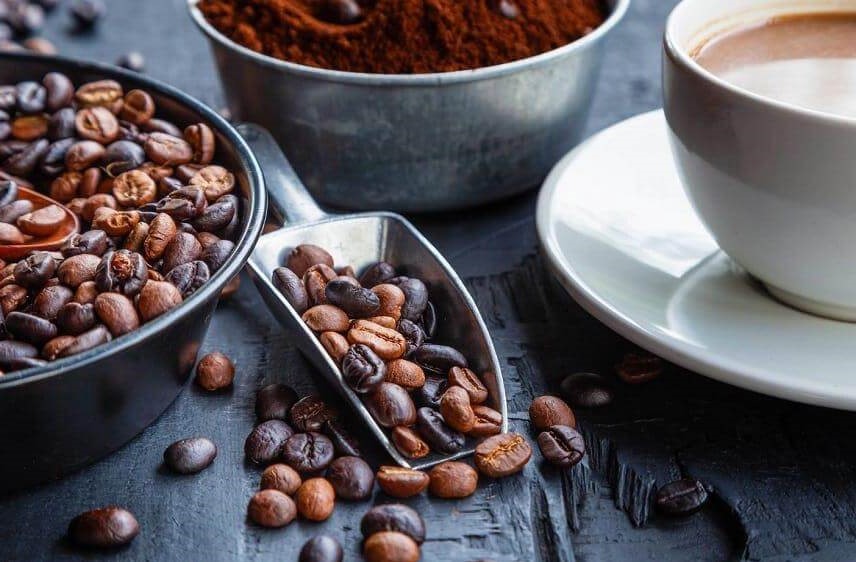How to Make Coffee Without Coffee Maker, 8 Easy Methods That Work: For coffee lovers, the absence of a coffee maker can spell a morning disaster. But fret not because innovation knows no bounds in the world of coffee.
Whether you find yourself in the wilderness, at a friend’s place with no coffee gadget in sight, or simply curious about the art of coffee improvisation, you’re in for a treat.
In this comprehensive guide, we’ll explore many techniques, ranging from the classic to the quirky, ensuring you never miss your daily caffeine fix.
From the basics to the unexpected, we’ll dive deep into the world of coffee-making ingenuity, proving that a great cup of joe is always within reach, no coffee maker required. So, let’s embark on a journey of aromatic discovery and learn the art of crafting that perfect morning elixir, complete with detailed step-by-step instructions.
8 Methods of Coffee Making:
How To Make Coffee Without A Coffee Maker
How To Make Coffee On A Stovetop
How To Make Coffee Without Filtering
How To Make Coffee With A Filter
How To Make Coffee With Just Hot Water
Alternative Ways Of Making Coffee Without A Coffee Maker
How To Make Coffee Without Coffee Maker:
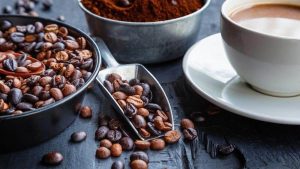
Method 1: Stovetop method/ brewing method
The term “brewing method” generally refers to preparing coffee or tea. Different methods can result in varying flavors and characteristics in the final beverage. Here, I’ll provide a brief overview of some standard brewing methods for both coffee and tea:
Coffee Brewing Methods:
- Drip Coffee Maker: it is most usaual methods. Crushed coffee is placed in a paper or metal filter, and warm water is poured over it. The brewed coffee drips into a pot below.
- French Press (Press Pot): Coarsely ground coffee is steeped in hot water, and then a metal or mesh plunger separates the grounds from the liquid.
- Pour-Over: Hot water is manually poured over ground coffee in a filter. This process allows for exact control over the brewing process and is known for producing a clean, bright cup.
- Espresso Machine: Espresso is made by forcing warm water through finely crushed coffee beans at high pressure. It’s the base for various coffee beverages like cappuccinos and lattes.
- AeroPress: Ground coffee and water are mixed in a chamber and pressed through a paper or metal filter. It’s a versatile and portable method.
- Cold Brew: Tastelessly ground coffee is steeped in cold water for an extended period. The result is a smooth, less acidic coffee concentrate, often served over ice.
Tea Brewing Methods:
- Steeping: Tea leaves or tea bags are steeped in hot water for a specific amount of time, depending on the type of tea. Common teas include black, green, white, oolong, and herbal.
- Gong Fu Cha: A traditional Chinese method for brewing tea. It involves multiple short infusions in a small teapot, allowing for precise control over the strength and flavor of the tea.
- Japanese Tea Ceremony: A highly ritualized method for preparing and serving matcha (powdered green tea). It involves whisking the matcha with hot water.
- Teapot Brewing: Tea leaves are placed in a teapot, and hot water is poured over them. The tea is then poured into cups after the appropriate steeping time.
- Iced Tea: Like hot tea steeping, the tea can cool before being served over ice. Sweeteners and lemon are often added.
- Blooming Tea: Artistic tea balls that “bloom” when steeped in hot water. These are often as much a visual experience as they are a taste experience.
The brewing method for coffee or tea depends on personal preference, the type of beans or leaves used, and the desired flavor profile. It’s essential to use the right equipment and follow the recommended brewing parameters for each method to achieve the best results.
How To Make Coffee On A Stovetop:
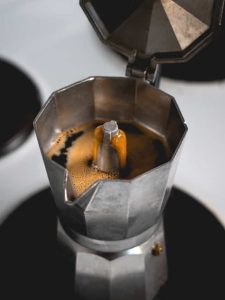
Method 2: Stovetop espresso method with a Moka pot
Brewing espresso-style coffee using a Moka pot on a stovetop is popular for producing strong and flavorful coffee. Here’s a step-by-step guide to using a Moka pot for stovetop espresso:
You’ll Need:
- Moka Pot (Stovetop Espresso Maker)
- Fresh Coffee Beans or Ground Coffee
- Water
- Stovetop or Heat Source
- Grinder (if using whole beans)
- A cup or espresso shot glass
Steps:
1. Prepare Your Coffee:
-
- If you’re using whole coffee beans, grind them to a fine constancy, similar to table salt.
- Measure the coffee: Fill the Moka pot’s filter basket with coffee grounds, but do not pack them too tightly. Level them off without pressing down.
2. Add water:
-
- Fill the Moka pot with fresh water to the safety valve. Be careful not to overfill.
3. Assemble the Moka Pot:
-
- Assemble the Moka pot by attaching the filter basket filled with coffee to the bottom chamber.
- Screw on the top chamber securely.
4. Heat on the Stovetop:
-
- Place the Moka pot on a stovetop burner over medium heat. Use a low flame to prevent burning or over-extraction.
- Keep the Moka pot lid open during brewing to observe the coffee extraction.
5. Brew the Espresso:
-
- Pressure will build as the water heats up, and coffee will percolate into the top chamber. You’ll hear a bubbling or gurgling sound as this happens.
- The brewing process usually takes a few minutes. It’s essential to monitor the process carefully.
6. Remove from Heat:
-
- Take away the Moka pot from the heat source when you hear a hissing or gurgling sound, and the top chamber is filled with coffee. This indicates that the brewing process is complete.
7. Serve:
-
- Pour the prepared coffee into your cup or espresso shot glass. It will have a robust and concentrated flavor similar to espresso.
- You can dilute it with hot water with a milder taste or use it as a base for various espresso-based drinks like cappuccinos or lattes.
8. Clean and Maintain:
-
- After each use, disassemble the Moka pot, rinse the components with warm water (no soap), and dry them thoroughly before reassembling.
Remember that the flavor and strength of your stovetop espresso can be adjusted by experimenting with the coffee-to-water ratio and the grind size. Over time, you’ll find the perfect balance that suits your taste preferences.
How To Make Coffee Without Filtering:
Method 3: Faux French press without the filtering
If you want to make coffee using a method similar to a French press but without the traditional filtering, you can try a technique called “cowboy coffee” or “campfire coffee.” This simple method may result in some coffee grounds settling at the bottom of your cup. Here’s how to make it:
Ingredients and Equipment:
- Fresh Coffee Beans or Ground Coffee
- Water
- A Stovetop or Heat Source
- A Pot or Kettle
- A Heatproof Mug or Cup
- A Stirring Stick or Spoon
Steps:
- Boil Water: Heat water in a pot or kettle until it reaches a rolling boil. Permit it to cool slightly for about 30 seconds after boiling to achieve the ideal temperature for brewing coffee, around 200°F (93°C).
- Measure Coffee: Measure the desired coffee grounds into your heatproof mug or cup. A general guide is to use 1 to 2 tablespoons of coffee per 6 ounces (180 mL) of water, but you can adjust this to suit your taste.
- Add Hot Water: Pour the hot water directly into the cup with the coffee grounds. Stay careful not to fill the cup to the brim to avoid spillage. Stir the mixture thoroughly to ensure even saturation of the coffee grounds.
- Steep: Let the coffee to steep for about 3-4 minutes. The coffee power will sink to the bottom of the cup during this period.
- Break the Crust: After the steeping time, take a spoon and gently breakdown the crust that has formed on the surface of the coffee. This helps release some of the trapped aromas.
- Wait for Grounds to Settle: Allow the coffee grounds to sink at the bottom of the cup for another 1-2 minutes. Be patient; this step is crucial for minimizing the ground in your final cup.
- Slowly Sip: Carefully sip the coffee, ensuring you stop before reaching the layer of grounds at the bottom of the cup. The coffee will be flavorful and strong, similar to what you’d get with a French press.
Remember that cowboy coffee may have some sediment at the bottom due to the lack of a filter. If you find it too gritty, let it sit for a bit longer to allow more grounds to settle or use coarser coffee grounds. It’s a rustic and straightforward way to make coffee, often enjoyed while camping or when traditional brewing methods aren’t available.
How To Make Coffee With A Filter:
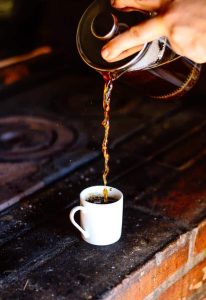
Method 4: French press
I’ll provide instructions on how to make coffee using a French press, which is different from using a coffee filter. A French press uses a metal to separate the coffee grounds from the brewed coffee, eliminating the need for a filter. Here’s how to do it:
Ingredients and Equipment:
- Fresh Coffee Beans (whole or ground to a coarse consistency)
- Hot Water (around 200°F or 93°C)
- French Press
- A Stirring Stick or Spoon
Steps:
- Measure Coffee: Measure the desired amount of coffee grounds. A standard ratio is 1 ounce (28 grams) of coffee to every 15 ounces (450 mL) of water. You can regulate this ratio to your taste preference.
- Preheat the French Press: Pour a small amount of hot water into the empty French press to preheat it. Swirl the water around, then pour it out.
- Add Coffee Grounds: Place the measured coffee grounds into the bottom of the French press.
- Boil Water: Heat water until just off the boil, around 200°F (93°C). Allow it to sit for a moment to cool slightly after boiling.
- Add Water: Pour the warm water over the coffee grounds in the French press. Use a circular motion to ensure all the coffee grounds are saturated. Use the right amount of water according to your coffee-to-water ratio.
- Stir: Gently stir the coffee and water mixture with a stirring stick or spoon to ensure even saturation.
- Place Lid and Plunger: Put the lid on the French press with the plunger pulled up. This helps to retain heat during the brewing process.
- Brew: Let the coffee steep for about 4 minutes. You can adjust the steeping time depending on your preference to strengthen or weaken the coffee.
- Press Down Plunger: Press the plunger slowly and steadily after the steeping time. Use even pressure to separate the coffee grounds from the liquid. Do this in one smooth motion.
- Serve: Pour the freshly brewed coffee into your cup or mug. Be cautious when pouring, as the coffee can be hot.
- Enjoy: Your French press coffee is ready to be enjoyed. You can beverage it black or add milk, cream, sugar, or other flavorings.
- Clean the French Press: After serving, remove the used coffee grounds and rinse it with warm water. Allow it to dry before reassembling.
This coffee is known for its rich and full-bodied taste. It’s a simple and active way to brew coffee without disposable filters, making it eco-friendly.
How To Make Coffee With Just Hot Water:
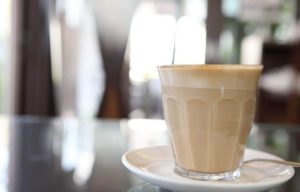
Method 5: Coffee Bag Method
You can make coffee with hot water using a coffee bag, similar to tea with a tea bag. Here’s how to do it:
Ingredients and Equipment:
- Coffee Bag (pre-filled with ground coffee)
- Hot Water (around 200°F or 93°C)
- Mug or Cup
- Stirring Stick or Spoon (optional)
- Sugar, cream, or other flavorings (optional)
Steps:
- Prepare Your Coffee Bag: Start by choosing a coffee bag. These are typically pre-filled with ground coffee. Make sure the bag is sealed.
- Boil Water: Heat water until just off the boil, around 200°F (93°C). Allow it to sit for a moment to cool slightly after boiling.
- Place the Coffee Bag in Your Mug: Open the coffee bag and place it in your empty mug or cup.
- Pour Hot Water: Pour the hot water directly over the coffee bag in the mug. Use enough water to fill your mug to your desired coffee strength. A general guideline is about 1 bag per 6-8 ounces (180-240 mL) of water, but you can adjust this to your taste.
- Steep the Coffee: Allow the coffee bag to steep in the hot water for about 3-4 minutes. This time can vary depending on your preference for strength.
- Stir (Optional): Use a stirring stick or spoon to stir the coffee in the mug gently. This helps ensure even extraction.
- Remove the Coffee Bag: After steeping, carefully lift the coffee bag out of the mug, gently pressing it against the side of the mug to release any excess liquid.
- Add Flavorings (Optional): If you like, add sugar, cream, or other flavorings to your coffee to suit your taste.
- Enjoy: Coffee is now ready to be enjoyed. Sip it slowly and savor the flavor.
- Please dispose of the Coffee Bag: Properly dispose of the used coffee bag by throwing it away.
The coffee bag method is convenient for making coffee when you have limited equipment and want a quick and mess-free brewing process. It’s similar to using a tea bag and provides a simple solution for coffee on the go or in situations where a traditional coffee maker or French press isn’t available.
Alternative Ways Of Making Coffee Without A Coffee Maker:

Method 6: Turkish coffee
Turkish coffee can be made without a coffee maker; you can prepare it directly in a Turkish coffee pot (cezve or ibrik). Here’s how to make Turkish coffee without a coffee maker:
Ingredients and Equipment:
- Fresh Coffee Beans (whole beans)
- Cold Water
- Sugar (optional)
- Ground Cardamom (optional)
- Turkish Coffee Pot (cezve or ibrik)
- Coffee Grinder
- Small Coffee Cups
- A Small Spoon
- A Heat Source (like a gas burner)
Steps:
- Measure and Grind the Coffee: Measure one heaping teaspoon of whole coffee beans per 3 ounces (90 mL) of water. The grind should be excellent, almost like powdered sugar. You can use a dedicated Turkish coffee grinder at your resident coffee shop to grind the beans for you.
- Measure Water: Measure the desired amount of cold water in your Turkish coffee pot (cezve or ibrik). The ratio is typically one heaping teaspoon of coffee to each 3 ounces (90 mL) of water.
- Optional: Add Sugar and Cardamom: If you like your Turkish coffee sweet and flavored, add sugar and cardamom to the cold water before heating. Start with one teaspoon of sugar and a pinch of cardamom per 3 ounces (90 mL) of water. Adjust to your liking.
- Mix Ingredients: Stir the coffee, cold water, and any added sugar or cardamom in the Turkish coffee pot until well combined.
- Heat the Coffee: Place the Turkish coffee pot over low heat. Using a heat source like a gas ring or a low flame on an electric stovetop is essential. Allow the coffee mixture to heat slowly.
- Wait for the Foam: As the coffee heats, it will create a foamy layer. This foam, known as “kaimaki,” is a sign of a well-brewed Turkish coffee. Be patient and avoid stirring during this step.
- Stir and Wait Again: Once the foam starts to rise, give it a gentle stir with a small spoon. Then, allow the coffee to heat more until the foam rises again.
- Remove from Heat: As soon as the foam increases for the second time and before it spills over, remove the Turkish coffee pot from the heat source. Be cautious, as the coffee can boil over quickly.
- Serve: Pour the coffee into small demitasse cups. Turkish coffee is traditionally served without milk. You can serve it with cold water to cleanse your palate between sips.
- Enjoy: Turkish coffee is known for its rich and strong flavor. Sip it slowly and savor the experience. The coffee grounds will sink at the bottom of the cup, so avoid drinking the last sip to prevent any grit.
Turkish coffee prepared directly in a Turkish coffee pot is a delightful and traditional way to enjoy this intense and flavorful coffee.
Method 7: Cowboy coffee
Cowboy coffee is a simple and rustic way without using a coffee maker or specialized equipment. It’s a method often used by cowboys while camping or on the trail. Here’s how to make cowboy coffee:
Ingredients and Equipment:
- Fresh Coffee Grounds (coarse grind is preferable)
- Cold Water
- A Pot or Kettle
- A Heat Source
- A Long-Handled Spoon
- A Heatproof Mug or Cup
Steps:
- Measure Coffee Grounds: Measure the desired amount of coffee grounds. A rough guideline is about 1 heaping tablespoon of coffee grounds per 6 grains of water, but you can change this to your taste.
- Measure Water: Measure cold water in your pot or kettle. The ratio is typically one heaping tablespoon of coffee to each 6 ounces (180 mL) of water.
- Combine Coffee and Water: Mix the coffee grounds directly into the cold water in your pot. Stir them together thoroughly.
- Heat the Coffee: Place the pot with the coffee and water mixture over your heat source. This can be a campfire, a camping stove, or any other heat source you have available.
- Bring to a Boil: Slowly heat the water and coffee mixture until it comes to a rolling boil. Avoid a rapid boil that could cause the mixture to overflow.
- Simmer: Once it starts boiling, lower the heat to a simmer. Let it simmer for about 2-3 minutes. This helps the coffee grounds settle at the bottom of the pot.
- Remove from Heat: Carefully remove the pot from the heat source after simmering. Allow it to settle the coffee grounds for a minute or two.
- Settle the Grounds: To help the coffee grounds settle at the bottom, sprinkle a small amount of cold water or gently tap the pot’s side. This encourages the grounds to sink.
- Serve: Slowly pour the coffee from the pot into your heatproof mug or cup. Pour it gently to avoid disturbing the settled coffee grounds at the bottom.
- Enjoy: Your cowboy coffee is ready to be enjoyed. Remember that some sediment may be at the bottom of the cup, so sip carefully.
Cowboy coffee is a rugged and straightforward way to make coffee, ideal for camping or outdoor adventures. It may not produce the cleanest cup of coffee, but it’s appreciated for its simplicity and old-school charm.
Method 8: Instant coffee
making coffee with instant coffee is quick and straightforward. Here’s how to do it:
Ingredients and Equipment:
- Instant Coffee Granules or Powder
- Hot Water
- A Mug or Cup
- Spoon
- Sugar, Cream, or Flavorings (optional)
Steps:
- Boil Water: Heat the water to your preferred temperature. Ideally, it should be below boiling, around 200°F (93°C). You can heat the water with a kettle, microwave, or other method.
- Add Instant Coffee: Measure your mug’s desired amount of instant coffee granules. A typical serving is about 1 to 2 teaspoons per 6-8 ounces (180-240 mL) of water, but you can adjust this to your taste.
- Optional: Add Sugar and Cream: If you like your coffee sweetened or with cream, add sugar, creamer, or any other flavorings to the mug with the instant coffee.
- Pour Hot Water: Carefully pour the hot water directly into the mug over the instant coffee. Use a circular motion to ensure the coffee granules or powder dissolve entirely.
- Stir: Use a spoon to mix the coffee and hot water mixture thoroughly until everything is well combined. Make sure there are no clumps of coffee left.
- Optional: Adjust Flavor: Taste your coffee and adjust the flavor by adding more sugar, creamer, or hot water to achieve your preferred taste.
- Let It Cool Slightly: Allow the coffee to cool for a minute or two so it’s at a comfortable drinking temperature.
- Enjoy: Your instant coffee is ready to be enjoyed. Sip it slowly and savor the flavor.
Instant coffee is suitable for making coffee when you need a quick caffeine fix or cannot access more elaborate brewing methods. It offers a decent coffee taste with minimal effort.
Bonus Tips & Tricks:
Here are some bonus tips and tricks for making coffee without using a coffee maker:
- Use Good-Quality Coffee Beans: The quality of your coffee starts with the beans. Select freshly roasted beans for the best flavor.
- Properly Store Your Coffee: To maintain freshness, store your coffee beans in an airtight bottle away from light, heat, and moisture.
- Grind Your Coffee Fresh: Grind your coffee just before brewing. This ensures maximum flavor since ground coffee can quickly lose its aroma.
- Experiment with Grind Size: The grind size of your coffee affects the flavor. Coarser grinds are better for methods like the French press, while finer grinds work well for espresso-style brews.
- Use a Thermometer: If you’re heating water, use a thermometer to ensure it’s at the right temperature (around 200°F or 93°C) for brewing. Consistent water temperature is crucial for good coffee.
- Brew Time Matters: Adjust the brewing time to your taste. Longer brew times can result in more robust coffee, but be cautious not to over-extract, leading to bitterness.
- Consider Filter Alternatives: If you don’t have a coffee filter, you can use a fresh cloth or a paper towel as an improvised filter. Just make sure they’re free of any residues or odors.
- Preheat Your Cup or Mug: Pouring hot water into your cup or mug before adding coffee helps maintain the coffee’s temperature and flavor.
- Practice Patience: When brewing methods like pour-over or Turkish coffee, patience is critical. Allow the coffee to bloom and steep to extract the full flavor.
- Water Quality Matters: Use clean and preferably filtered water to make coffee. The quality of your water affects the taste of the final brew.
- Clean Your Equipment: After brewing, clean your equipment thoroughly to prevent any buildup of coffee residues, which can affect the flavor of future brews.
- Experiment with Ratios: Don’t be afraid to experiment with the coffee-to-water ratio. Everyone’s taste is different, so adjust to find your perfect balance.
- Practice and Learn: Making coffee is both an art and a science. Keep practicing and trying different methods and beans to discover your favorite flavors and brewing techniques.
- Invest in a Few Essential Tools: While you can make coffee without a coffee maker, having a few essential tools like a good grinder and a kettle with a temperature gauge can significantly improve your coffee-making experience.
Remember that making coffee is a personal journey; there’s no one-size-fits-all approach. It’s all about finding the method and flavor profile that you enjoy the most.
Conclusion:
In summary, when you find yourself without a coffee maker, there’s no need to go without your daily caffeine fix. This article has explored various alternative methods for brewing coffee, from the simplicity of pour-over and the richness of the French press to the intensity of the Moka pot and the tradition of Turkish coffee. Even instant coffee offers a quick and convenient solution. With creativity and attention to detail, you can enjoy a delicious coffee handmade to your taste preferences, regardless of your location or equipment.

